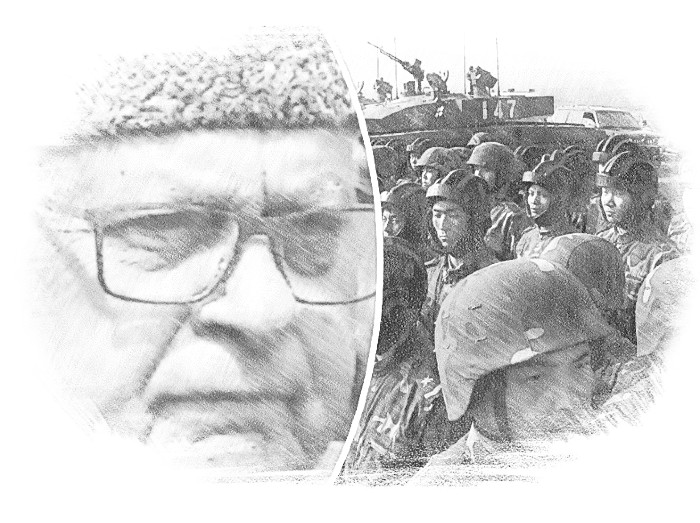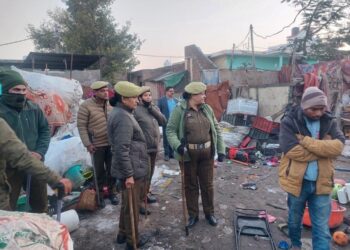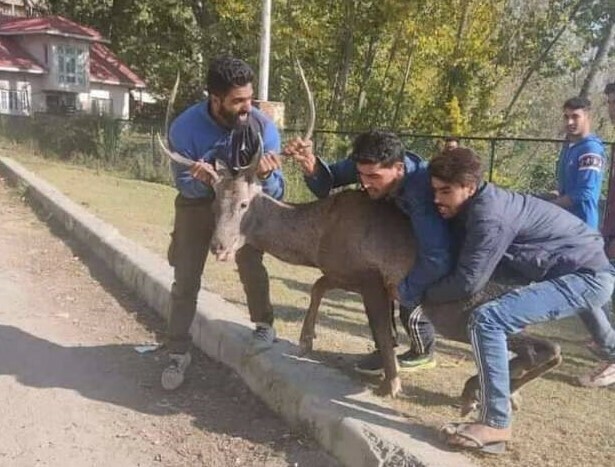
Even as National Conference patron sought lurking dragon’s intervention in restoring abrogated special status of Jammu and Kashmir, the fast changing equations on the ground since August 5, 2019 tell some other story.
By Mir Khanam
POLITICAL pundits are already feeding and fuelling news mills about New Delhi’s fresh implementation of around a dozen new central laws in Jammu and Kashmir. Among other things, they argue, these laws only hint at a shore up resolve to undo the region’s old order.
These laws came on the heels of the controversial language act and the bolstering campaign for the script change in the Muslim-majority region.
It was in this backdrop that National Conference president Farooq Abdullah—the ardent advocate of binned autonomy of the Atal-era of NDA-I regime—blew a Beijing bugle, seeking dragon’s intervention in restoring pre-August 5, 2019 position in the erstwhile state.
The NC patron’s mercurial political temperament apart, his newfangled political pitch, many believe, was stirred by a salvo of stories—suggesting Beijing’s bitterness with the unilateral abrogation of Articles 370 and 35-A from the conflict zone. Even Abdullah is making no bones about it.
And now, as New Delhi is staring at the long frozen haul at Ladakh frontiers—where US says China has already amassed 60 thousand PLA troops—the NC president is apparently fishing in troubled waters.
But between the Beijing’s belligerence and Farooq Abdullah’s political bidding, lies the fast-altering landscape of Jammu and Kashmir. Political commentators believe that the ongoing no-holds-barred approach is only making Delhi dauntless to flip the distinctness of the region.
What’s equally supporting this assertion is the speedy projects being implemented in J&K since last summer. For instance, to manage the defiant territory, the administration has invoked the Public Safety Act (PSA) against 444 persons, out of which nearly 300 have been released so far.
While 51 of them were set free on the orders of J&K High Court, others were also released after administrative reviews, with the conditions that they will not issue any (political) statements.
Due to ‘no carrot and only stick’ policy, Union Ministry of Home Affairs recently revealed that the militancy-related activities have reduced by around 36% in the valley after the abrogation of Article 370.
While maintaining what looks like a tight-grip on defiance, Delhi since last year tried to manage the region through a series of controversial decisions. In this regard, already over 18.52 lakh domicile certificates have been issued in the erstwhile state. A significant proportion has been given out to those who lived or served in the state for years.
As part of the “development” agenda, over 10,000 vacancies at all the levels were identified for recruitment in various departments in the first phase, while more than three lakh J&K government employees got benefits under the 7th Central Pay Commission.
In the name of big projects, the world’s highest railway bridge over river Chenab is expected to connect the valley with the rest of India by train for the first time by 2022. Similarly, the government introduced an array of insurances schemes including the Atal Pension Yojana and launched 85 people-oriented development schemes, like PM-KISAN, PM-KISAN-Pension, Pradhan Mantri Jan Dhan Yojana and Stand-Up India in Jammu and Kashmir.
Likewise, in the name of “potential development” of the region, investment in the tourist infrastructure—in the form of film shootings, adventure and religious tourism—is being planned. Such proposals, however, are being conceived when the double-lockdown has already broken the back of Kashmir’s tourism industry.
In the same manner, given the massive reliance of Kashmiris on outside institutions, the narrative of privatization of education and health is being peddled as a new feature of “Naya Kashmir”.
The main argument so far has been whether the abrogation can bring “peaceful change” for the people of Kashmir or it will prove just another gimmick. The main concerns across various sections of the society have been the alleged change in the demographics of the Muslim-majority region.
Many Kashmiris are today worried about their cultural identity and traditional extinction in the coming time.
Apart from this, many fear that the power to control J&K will subsequently shift towards the centrally ruling BJP government after various laws have been passed. This has already alarmed the traditional power centres of the region led by National Conference and Peoples Democratic Party.
Clearly, as Delhi is relentlessly changing the old order of the region, many new concerns and confusions are rearing their ugly head.
In this framework, Farooq Abdullah’s Beijing beckon might sound another sensational byte, but the unabated political will on the ground actually makes many believe that the major change has already swept across the valley, even before the long winter is yet to witness the possible elephant-dragon tussle at frozen heights of the erstwhile region of Jammu and Kashmir.
- The writer is an IMBA student at IUST, Awantipora.
Follow this link to join our WhatsApp group: Join Now
Be Part of Quality Journalism |
Quality journalism takes a lot of time, money and hard work to produce and despite all the hardships we still do it. Our reporters and editors are working overtime in Kashmir and beyond to cover what you care about, break big stories, and expose injustices that can change lives. Today more people are reading Kashmir Observer than ever, but only a handful are paying while advertising revenues are falling fast. |
| ACT NOW |
| MONTHLY | Rs 100 | |
| YEARLY | Rs 1000 | |
| LIFETIME | Rs 10000 | |










